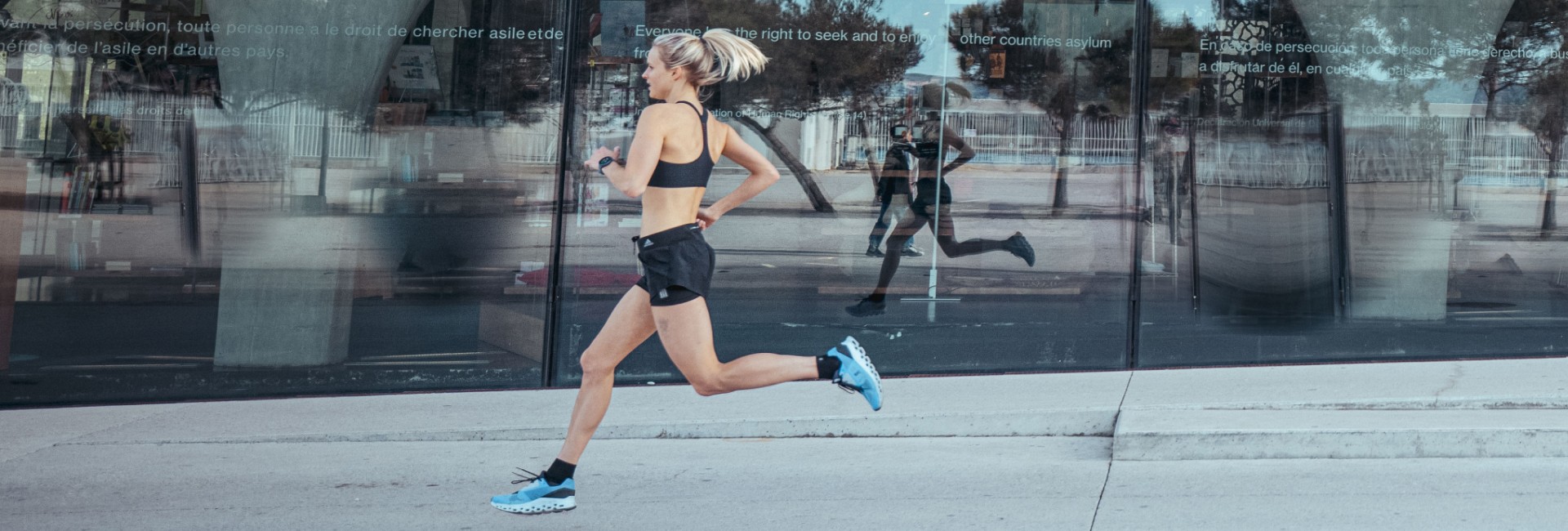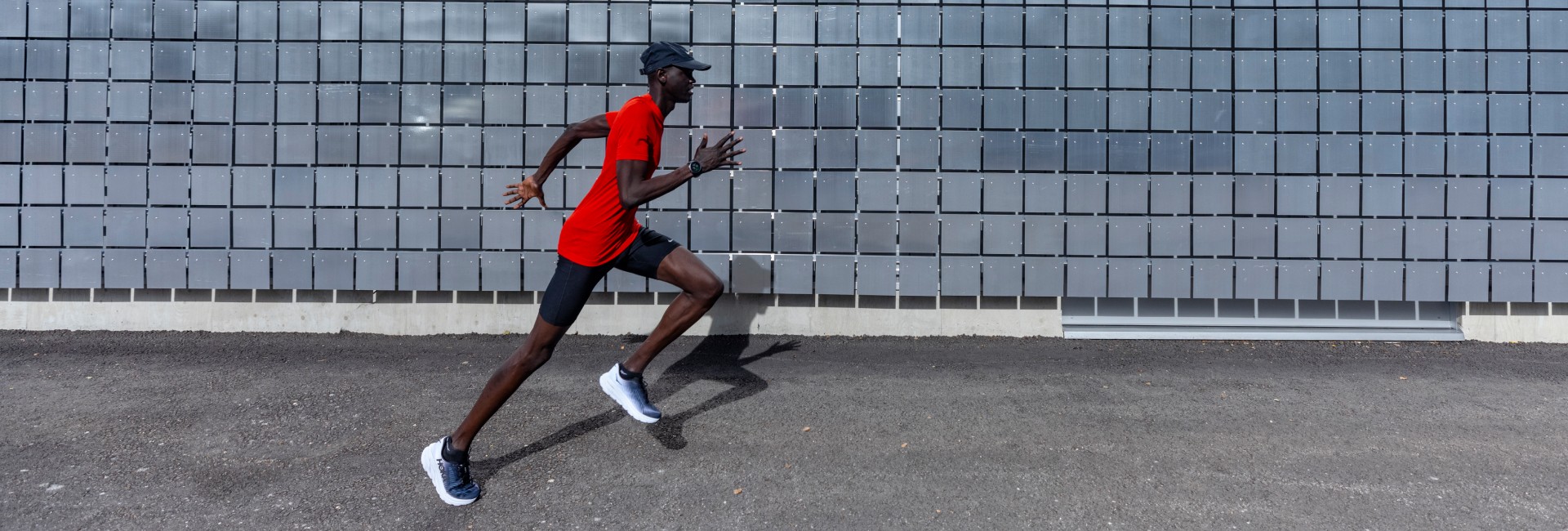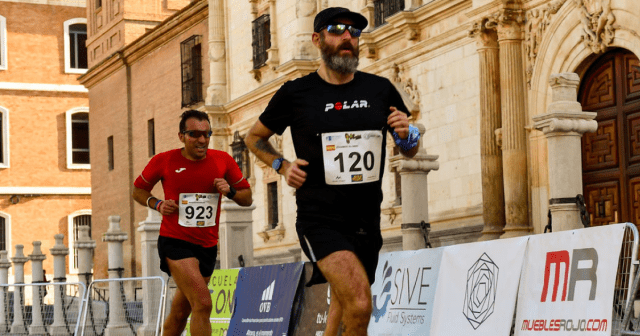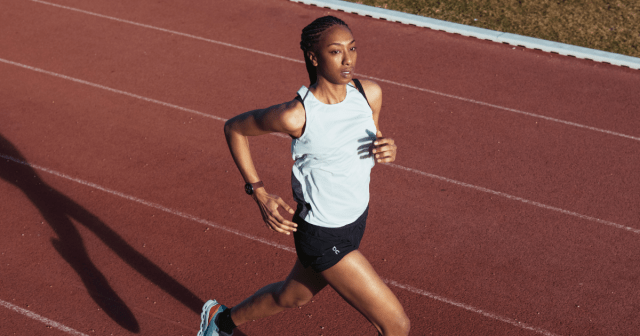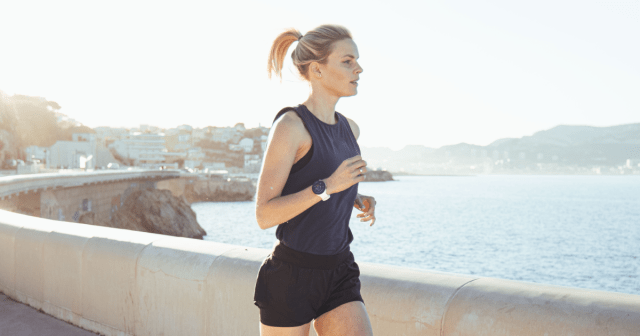Usually, you’d associate the words ‘running’ and ‘economy’ with someone who works for a national treasury – but no, this isn’t about boosting your financial acumen or increasing federal revenue. On the other hand, long-distance runners: this one is for you. So, if you’ve never heard about your running economy before, read on.
What is running economy?
Running economy (RE) measures the volume of oxygen (VO2) consumed per kilogram of body weight per kilometer. Simply put, it means the amount of oxygen your body needs to run at a certain pace. So, the less oxygen you consume per distance, the better your RE.
We each have differing levels of VO2, and if our body can be more economical with it (i.e., do more while using less oxygen), then we have enhanced capacity for anything that requires physical stamina. So, this is especially important for endurance athletes like long-distance runners as our ability to sustain our pace will have an enormous effect on our results.
How is running economy measured?
Running economy is typically measured in a lab-based test. The person will run on a treadmill at a variety of speeds for long enough that they achieve a physiological steady-state (known as homeostasis) while having their VO2 measured. This type of test will usually last for anywhere between three to 15 minutes.
Your running economy score is then calculated by the amount of oxygen required for you to move one kilometer, normalized for body weight (ml/kg/km). The lowest reported RE value was in an East African runner who scored VO2 at 16 km.hr−1 is 39.0 ml.kg-1.min−1. In comparison, Paula Radcliffe (former women’s marathon World Record holder) scored 44.0 ml.kg-1.min−1 at 16 km.hr−1. (1)
No wearable device can determine your RE because they don’t measure oxygen uptake. However, if you manage to improve your Polar Running Performance Test score, it’s probably that either your running economy or maximal oxygen consumption (VO2max) has improved (or both).
Factors that affect your running economy
- Muscle fiber type: athletes may be predisposed to a better or worse RE based on their composition of type I (‘slow twitch) and type II (‘fast twitch’) muscle fibers, although the findings are mixed. However, a study from the University of Texas suggests that cyclists with more slow-twitch muscle fibers tend to require less oxygen to maintain their power.
- Anthropometric characteristics: differences in physique, such as body mass and limb length, can influence a runner’s RE. For example, the low body mass index and long slender legs, where the majority of the mass is distributed higher on the thigh, have been suggested to be the primary reason for the extraordinary RE of African runners. (1)
- Running style: runners with less vertical oscillation (how they bob or bounce as they run) tend to have better RE, while studies indicate that runners naturally self-select an optimal stride length (and therefore most economical) over time. (1)
How to improve running economy
The only way to truly improve your running economy is through years of consistent training. Yes, unfortunately, there are no real shortcuts or #hacks for rapid enhancement.
The following graph indicates this, showing Paula Radcliffe’s RE over a ten years period. The number equates to, on average, a 1.5% improvement per year, which was achieved by training 200 to 250 km a week (initially, she trained less, but numbers grew over the years). (2) However, it’s important to note that some studies have found that exceeding 60km of running a week increases the risk of injury, so we don’t advise that you try to match Radcliffe’s training plan.
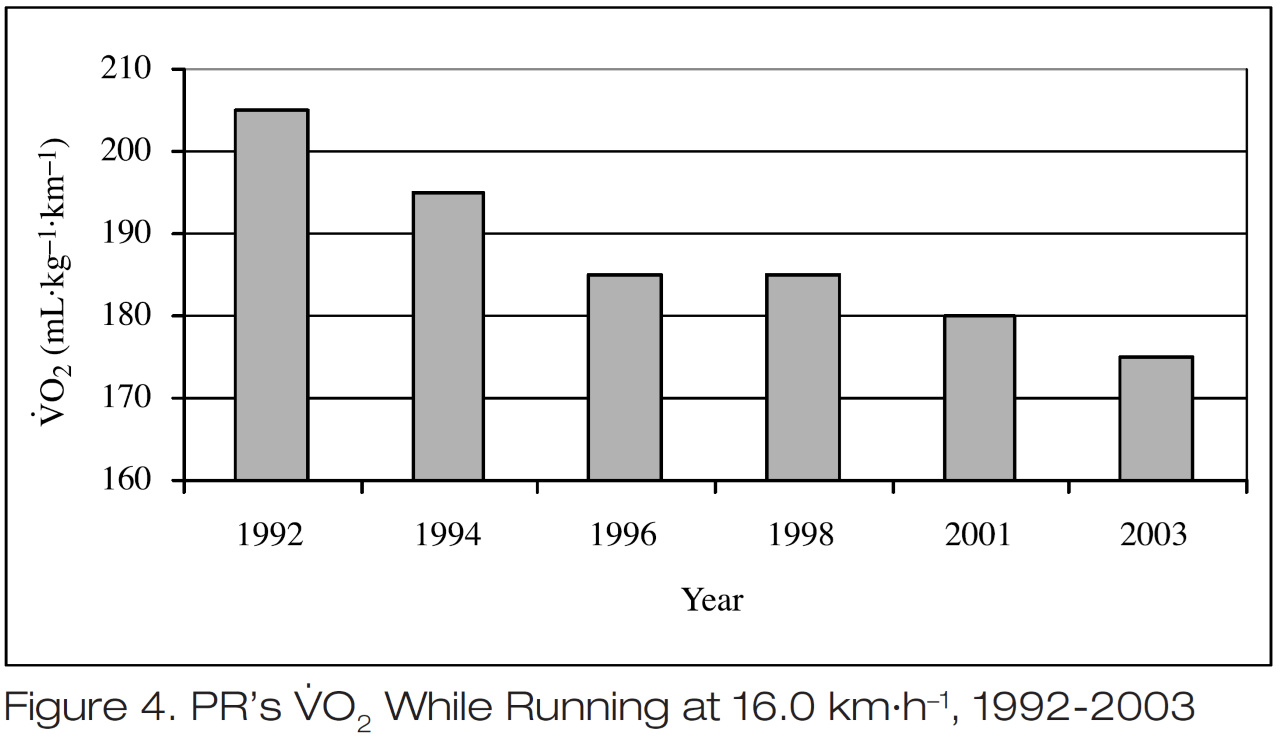
Despite this, studies have indicated that the following approaches do have the potential to boost your RE capacity. And if you’ve already read this far, you’re probably quite into science, so let’s look at what they suggest.
Hill runs
In a 2013 study published in the International Journal of Sports Physiology and Performance, 20 well-trained runners took part in six weeks of high-intensity uphill running intervals (sounds quite grueling, right?). It found that it enhanced the participants running economy and made them, on average, 2% faster in a 5k time trial.
Core workouts
According to this 2019 study, RE is “a controversial topic in core training” because of inconsistencies between different findings. So, they conducted research with 25 male college athletes and found that static balance, core endurance, and running economy “may” improve after eight weeks of core training. Not super conclusive, but it definitely won’t hurt to add some core strengthening exercises to your workouts.
Distract yourself
The polar opposite (pardon the pun) of mindful running, this 2021 study found that distracting yourself while you workout could enhance your running economy. They tested different focus or distraction methods on a group of 25 female college students while they ran on a treadmill and found that watching a basketball game was when they performed best. While distracted, each participant had lower blood lactate, consumed less oxygen, and provided a lower rate of perceived exertion.
Resources
(1) Barnes, K.R., Kilding, A.E. Running economy: measurement, norms, and determining factors. Sports Med – Open 1, 8 (2015).
(2) Jones AM. The Physiology of the World Record Holder for the Women’s Marathon. International Journal of Sports Science & Coaching. (2006)
If you liked this post, don’t forget to share so that others can find it, too.
Or give it a thumbs up!
I like this article
Please note that the information provided in the Polar Blog articles cannot replace individual advice from health professionals. Please consult your physician before starting a new fitness program.
